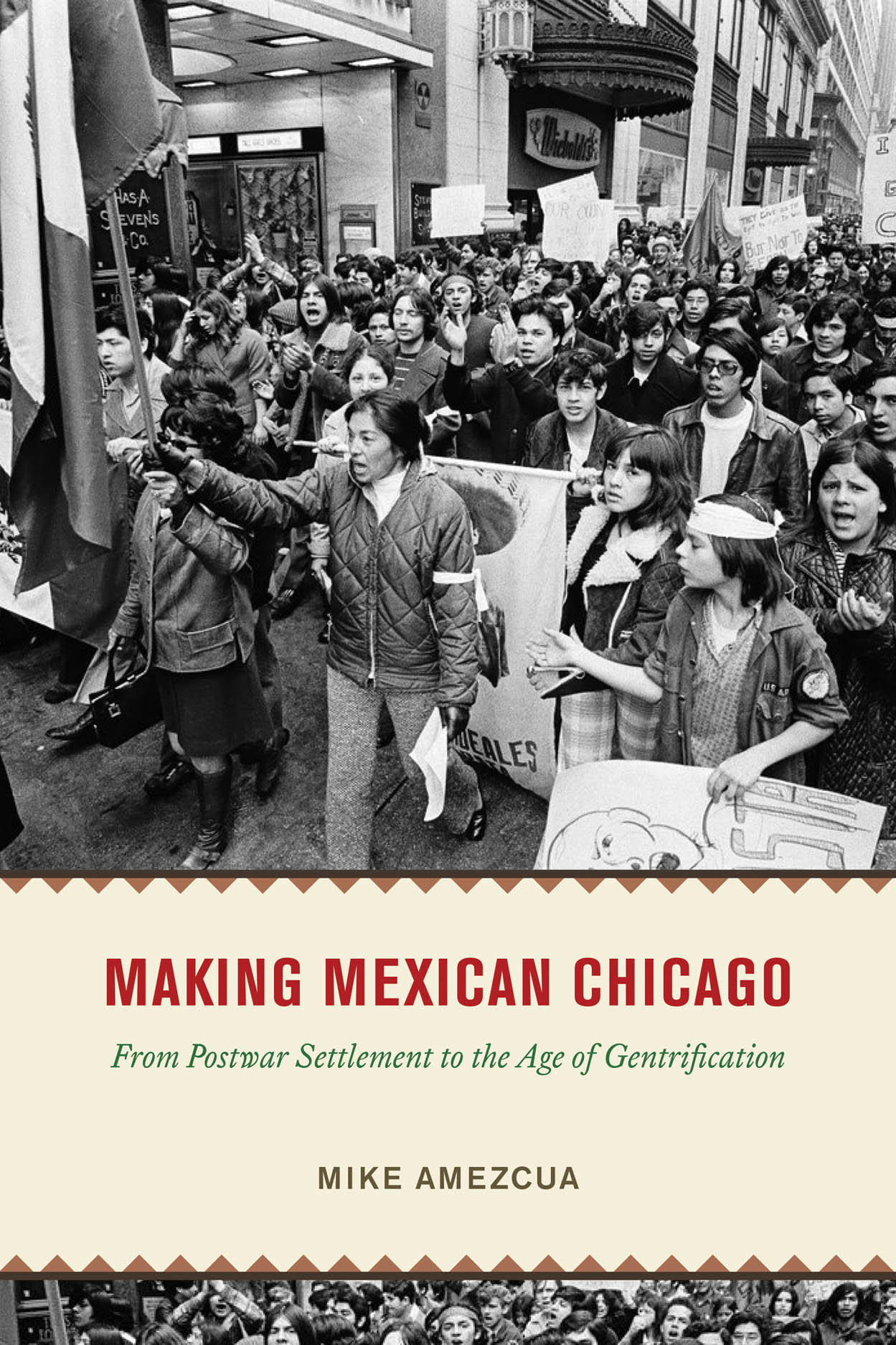Taking his readers on a walking tour of Pilsen, as well as Little Village, the Near West Side, and Back of the Yards, Amezcua chronicles how these neighborhoods, in the aftermath of World War II, became the nucleus of Chicago’s emergence as a Mexican metropolis. Whereas other important works on Latinx Chicago, such as Nicholas De Genova and Ana Y. Ramos-Zayas’s Latino Crossings and Lilia Fernández’s Brown in the Windy City, examine Mexicans and Puerto Ricans alongside one another, Amezcua is interested in situating the “Mexican experience” and “its everyday contests over neighborhoods, segregation, and the white defense of property rights” in a broader multiracial and multiethnic narrative. Ultimately, he provides critical insights into how Mexicans and Mexican Americans fought for inclusion—residentially, politically, economically, and culturally—in the Windy City.
In Making Mexican Chicago, Amezcua sets out to accomplish two things. First, he wants to retell the story of how Mexican immigrants and Mexican Americans helped transform communities throughout Chicago. As he shows, the Mexicanization of neighborhoods like the Near West Side and Little Village was not the result of natural processes; it was the product of residential segregation, postwar immigration, and urban renewal. But it was also driven by individuals like Anita Villarreal, a real estate agent and political broker who makes an appearance in nearly every chapter of the book, as well as groups like the Mexican American Democratic Organization and the Pilsen Neighbors Community Council. Where white Chicagoans saw postwar deindustrialization, capital flight, and dwindling property values, Mexican Americans saw an opportunity to turn housing vacancies and unstable neighborhoods into stable Mexican colonias during the 1960s and ’70s. By focusing on how Mexicans created their neighborhoods and, as a result, remade the city as a whole, Amezcua offers not only a tale of residential segregation but a look at how that segregation was opposed through coalition building, increased political influence, and barrio capitalism. Whether it was frustration with the federal programs of President Lyndon Johnson’s Great Society or with Chicago Mayor Richard Daley’s Democratic political machine, many Mexicans in the city began to express disillusionment with the liberal political order. For some, this led them to the militant activism of the Chicano movement. But for others, it resulted in championing small-business capitalism, homeownership, and a bootstrap mentality.
Amezcua’s second objective in Making Mexican Chicago, and perhaps the more ambitious one, is to offer a longue durée account of the xenophobic and anti-Latinx sentiments that came to the fore during Donald Trump’s 2016 election campaign. Moving block by block through communities with rapidly changing demographics, Amezcua demonstrates that between the 1940s and the 1960s, “white ethnic blue-collar neighborhoods became incubators of anti-immigration and anti-Latino sensibilities.” Offering a portrait of the attitudes of residents, neighborhood associations, precinct captains, and aldermen, Amezcua makes it clear how reactionary politics materialized in cities long before it burst onto the scene as a national politics.
